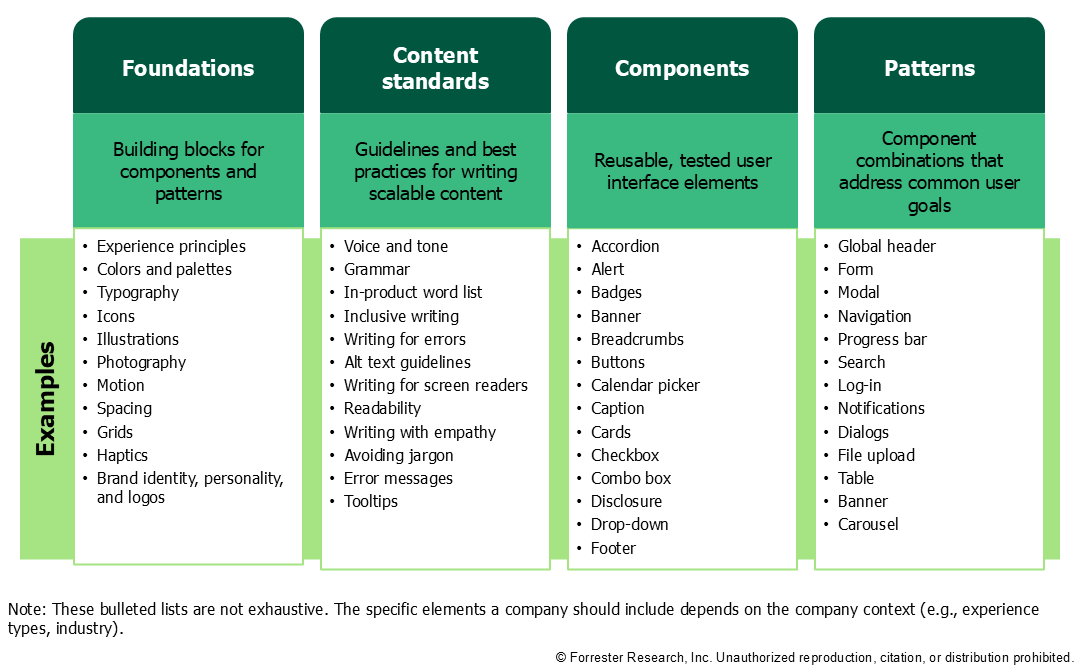You Still Need A Design System — Now More Than Ever
Design is in the news a lot these days. The US government recently created an initiative that mandates better design for government services. Accessibility regulations around the globe increasingly mandate that businesses and public-sector organizations prioritize inclusive design. And organizations that fail to practice responsible design are being held accountable — evidenced by the recent FTC settlement with Amazon. Clients often ask us, “What’s the most important thing we should invest in to create better digital experiences for customers?” The answer: a design system.
Forrester defines a design system as the translation of a company’s brand into a set of foundations, content standards, components, and patterns that teams use to create digital experiences. Organizations that get design right ensure that their design systems include all four of these elements and span both brand and CX.

What Are The Benefits Of A Design System?
Two-thirds of organizations tell us they use a design system, and we project that percentage will increase significantly in the next year for four reasons:
- Design systems are critical to improving brand and CX. When all of a company’s digital products are rooted in consistent design choices and content, customers can move through tasks and transition among channels more easily. In this way, design systems help brands improve the total experience.
- Design systems create major efficiencies. Design systems accelerate the time from design to development, help organizations get products to market faster, and help teams make decisions faster by clarifying what quality design means for the brand.
- Design systems reduce risk. Design systems help organizations scale security and accessibility best practices by providing standardized, tested building blocks for experiences. They also help maintain brand and consumer trust by helping teams ensure that every touchpoint looks and feels like it’s created by the same company. In this sense, design systems are key to maintaining your brand.
- Design systems increase employee engagement. By reducing repetitive and tedious work, design systems free up time for designers to work on new challenges that no one’s solved yet. They also improve collaboration across teams by enabling a smoother design-to-development transition.
If you’re a Forrester client, check out our new report, Q&A: Getting Started With Design Systems, to get answers to the six most important questions to ask when building a design system. Then, set up a conversation with us to learn how to apply these practices within your organization.
